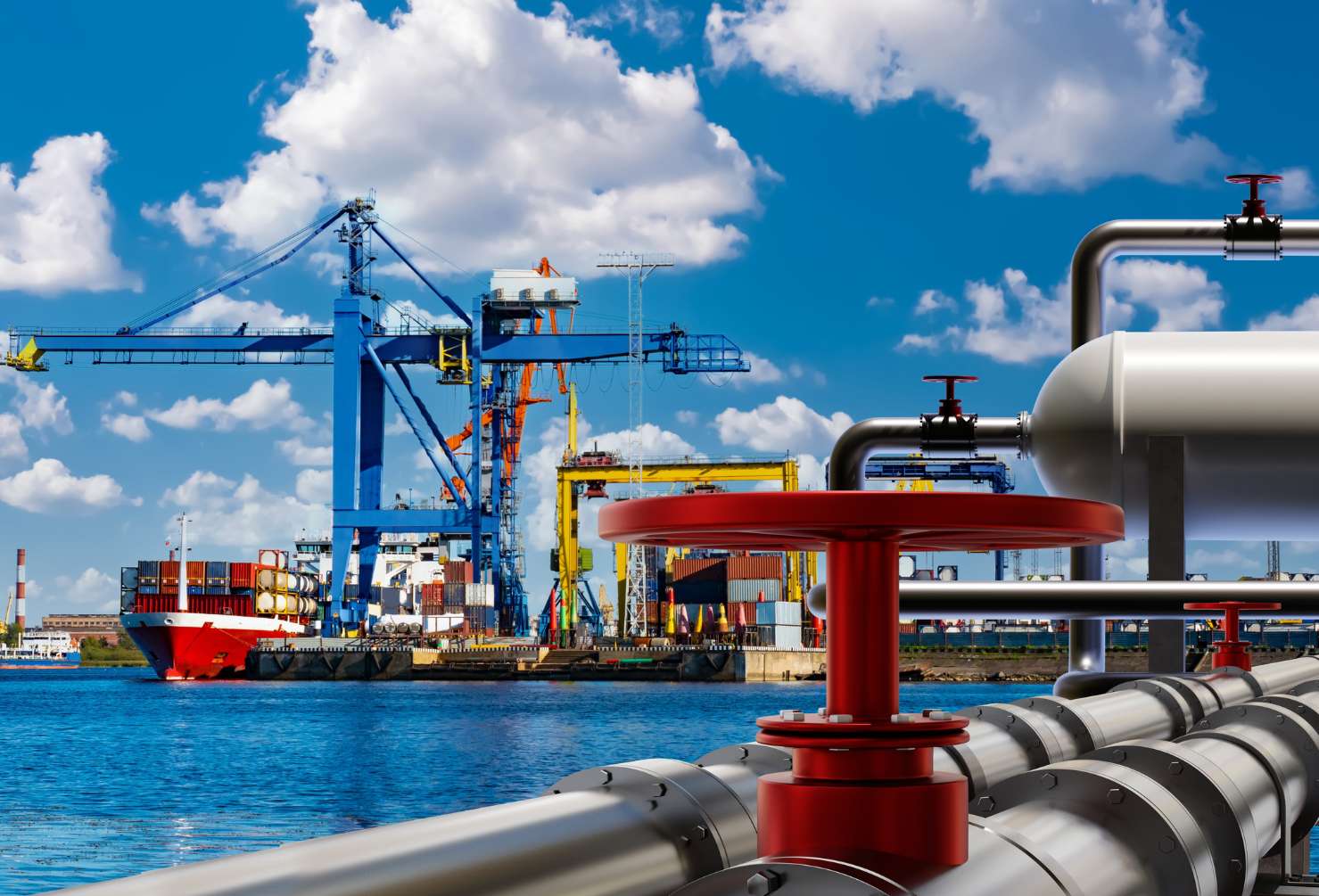
As the global energy landscape evolves, the oil and gas industry in Australia is also undergoing significant changes. The sector, long a cornerstone of the country’s economic and energy security, faces both opportunities and challenges as it navigates the complexities of a transitioning energy market, regulatory shifts, and technological advancements. As we look towards 2025, several key trends and predictions are emerging that will shape the future of Australia’s oil and gas industry. This blog explores these predictions, providing insights into what industry stakeholders can expect in the coming years.
1. Continued Investment in LNG and Diversification into Renewable Energy
Liquefied Natural Gas (LNG) Expansion
Australia has established itself as a global leader in LNG exports, and this trend is expected to continue through 2025. The country’s abundant natural gas reserves, particularly in the North West Shelf, Browse Basin, and Queensland’s coal seam gas fields, provide a robust foundation for sustained LNG production. With growing demand from Asia-Pacific markets such as China, Japan, and South Korea, Australia is well-positioned to capitalise on its geographic advantage and established trade relationships.
However, as the global focus shifts towards decarbonisation and cleaner energy sources, Australian LNG producers are likely to face increased pressure to reduce their carbon footprint. We predict that LNG projects will increasingly incorporate carbon capture and storage (CCS) technologies to mitigate emissions, making LNG a more sustainable energy option. Moreover, digitalisation and technological innovation will continue to enhance operational efficiency and reduce production costs, helping Australian LNG producers maintain their competitive edge in a global market.
Diversification into Renewables
While LNG remains a critical component of Australia’s energy strategy, there is a clear trend towards diversification into renewable energy sources. Oil and gas companies are increasingly investing in renewable energy projects, such as offshore wind, solar, and hydrogen, to align with the global energy transition and reduce their carbon footprint. By 2025, we expect to see more hybrid energy projects that combine traditional oil and gas operations with renewable energy solutions.
The integration of renewables is not only a strategic move to meet regulatory requirements and societal expectations but also a business opportunity. Companies that successfully diversify their energy portfolios will be better positioned to navigate the uncertainties of the global energy market and capture new growth opportunities.
2. Enhanced Focus on Sustainability and Decarbonisation
Commitment to Net-Zero Targets
Australia is committed to achieving net-zero emissions by 2050, and the oil and gas industry will play a crucial role in this transition. By 2025, we anticipate a stronger emphasis on sustainability and decarbonisation across the sector, driven by regulatory pressures, investor expectations, and societal demands.
Oil and gas companies are likely to ramp up their efforts to reduce greenhouse gas emissions through various means, including:
- Improving Energy Efficiency: Implementing energy-efficient technologies and practices to reduce the carbon intensity of operations.
- Carbon Capture and Storage (CCS): Expanding CCS projects to capture and store CO2 emissions from natural gas processing and other industrial activities.
- Methane Emissions Reduction: Focusing on reducing methane emissions from production and processing facilities, a potent greenhouse gas, through advanced monitoring and mitigation technologies.
Shift Towards Circular Economy Principles
Another trend we foresee is the adoption of circular economy principles within the oil and gas industry. Companies will increasingly focus on recycling and repurposing materials, reducing waste, and minimising the environmental impact of operations. This shift will require a rethink of traditional business models, with a focus on sustainability and resource efficiency.
3. Increased Activity in Decommissioning and Repurposing
Decommissioning of Aging Assets
With many of Australia’s oil and gas assets approaching the end of their operational life, decommissioning is becoming a significant focus. By 2025, we expect to see a substantial increase in decommissioning activity as companies retire aging infrastructure and address environmental and safety concerns. This trend presents both challenges and opportunities for the industry.
Decommissioning projects are complex and require specialised skills and careful planning to ensure safety and environmental compliance. Companies will need to invest in new technologies and develop innovative solutions to manage the decommissioning process effectively. At the same time, decommissioning offers opportunities for job creation and economic activity, particularly in regions with a high concentration of oil and gas assets.
Repurposing for New Uses
In addition to decommissioning, there is growing interest in repurposing existing infrastructure for alternative uses. By 2025, we anticipate an increase in projects that repurpose decommissioned oil and gas facilities for new energy projects, such as offshore wind farms, carbon capture and storage (CCS) facilities, and marine and aquaculture centres. Repurposing offers a sustainable alternative to complete decommissioning, extending the life of existing assets and contributing to the energy transition.
4. Technological Innovation and Digital Transformation
Adoption of Advanced Technologies
Technological innovation will continue to be a driving force in the oil and gas industry through 2025. Digital transformation, including the adoption of advanced technologies such as artificial intelligence (AI), machine learning, big data analytics, and the Internet of Things (IoT), will enhance operational efficiency, reduce costs, and improve decision-making processes.
We predict that companies will increasingly invest in digital twins—virtual replicas of physical assets that allow for real-time monitoring and simulation of operations. Digital twins will enable predictive maintenance, optimise production processes, and reduce downtime, leading to significant cost savings and improved performance.
Automation and Robotics
Automation and robotics will also play a crucial role in the future of the oil and gas industry. By 2025, we expect to see widespread adoption of automated systems and robotic technologies, particularly in areas such as drilling, inspection, and maintenance. These technologies will enhance safety by reducing the need for human intervention in hazardous environments and improve efficiency by automating repetitive tasks.
5. Workforce Evolution and Skills Development
Growing Demand for Digital and Technical Skills
As the industry undergoes digital transformation and adapts to new technologies, the demand for digital and technical skills will continue to grow. By 2025, we anticipate a significant shift in the skill sets required in the oil and gas industry, with a focus on data analytics, cybersecurity, software development, and automation.
Companies will need to invest in training and upskilling their workforce to ensure that employees have the necessary skills to operate in a digitally-driven environment. This trend will also create new opportunities for professionals with expertise in emerging technologies and digital innovation.
Emphasis on Diversity and Inclusion
Diversity and inclusion will become more prominent in the oil and gas sector by 2025. Companies are increasingly recognising the value of diverse teams in driving innovation, improving decision-making, and enhancing organisational performance. We predict a stronger emphasis on diversity and inclusion initiatives, with a focus on attracting and retaining talent from diverse backgrounds, including women, Indigenous Australians, and people from different cultural and ethnic backgrounds.
6. Market Volatility and Strategic Resilience
Navigating Market Uncertainties
The oil and gas industry is inherently volatile, subject to fluctuations in global oil prices, geopolitical tensions, and changes in demand patterns. By 2025, companies will need to be more agile and resilient to navigate these uncertainties effectively. This will involve adopting flexible business models, diversifying revenue streams, and enhancing risk management practices.
Strategic Partnerships and Collaborations
Strategic partnerships and collaborations will become increasingly important as companies seek to share risks, access new markets, and leverage complementary strengths. By 2025, we expect to see more joint ventures and collaborations between oil and gas companies, renewable energy providers, technology firms, and research institutions. These partnerships will drive innovation, reduce costs, and accelerate the energy transition.
7. Regulatory Changes and Compliance
Adapting to Evolving Regulatory Landscape
Regulatory changes will continue to shape the oil and gas industry in Australia. By 2025, we anticipate stricter regulations related to environmental protection, emissions reduction, and safety standards. Companies will need to stay ahead of these changes, ensuring compliance while also proactively addressing environmental and social responsibilities.
Focus on ESG (Environmental, Social, and Governance) Compliance
Investors, stakeholders, and regulators are increasingly focused on ESG performance, and this trend is expected to intensify by 2025. Companies will need to enhance their ESG strategies, transparently report on their sustainability efforts, and demonstrate their commitment to ethical and responsible practices.
The oil and gas industry in Australia is poised for significant transformation by 2025, driven by technological advancements, the global energy transition, regulatory changes, and evolving market dynamics. While the sector faces challenges, it also presents opportunities for growth, innovation, and sustainability. Companies that adapt to these trends, invest in new technologies, and prioritise sustainability and diversity will be well-positioned to thrive in the future. As we move towards 2025, the ability to navigate uncertainty, embrace change, and innovate will be key to success in Australia’s oil and gas industry.
Table of content
- 1. Continued Investment in LNG and Diversification into Renewable Energy
- 2. Enhanced Focus on Sustainability and Decarbonisation
- 3. Increased Activity in Decommissioning and Repurposing
- 4. Technological Innovation and Digital Transformation
- 5. Workforce Evolution and Skills Development
- 6. Market Volatility and Strategic Resilience
- 7. Regulatory Changes and Compliance





